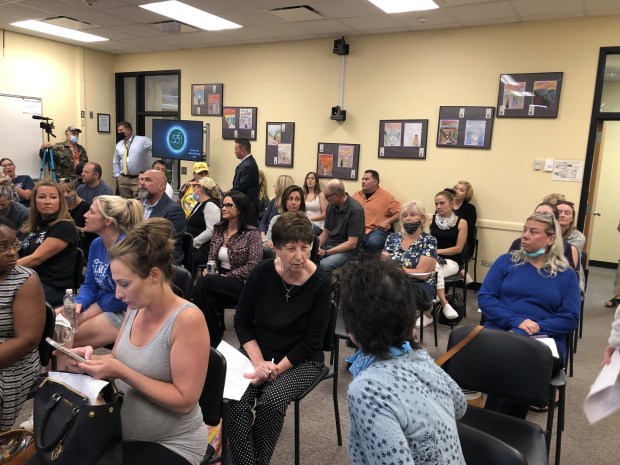With Lake County facing an aging workforce and talent shortage, business and workforce development groups have been attempting to court new pools of labor and building a pipeline of workers for area businesses.
Just last month, more than 4,000 middle and high school students attended the Navig8 career fair, featuring 100 area employers in everything from medical technology to farming. At another event, area manufacturers were given a tour of the College of Lake County’s Advanced Technology Center, showing off its potential for creating well-trained future employees.
Sitting just above the largest city in the Midwest, Lake County has unique advantages and challenges for its business landscape. Shaunese Teamer, executive director of the Lake County Chamber of Commerce, works to address those challenges.
“We connect businesses. We support business-to-business connections,” Teamer said. “It’s all about helping businesses expand what they do.”
Lake County has expanses of open, relatively affordable land impossible to find in the city, which draws in companies requiring lots of space and with an eye toward expansion. That key strength attracted various industries, including healthcare, transportation and logistics, manufacturing, information technology, and business and finance, according to DeMar Harris, assistant director with the Lake County Workforce Development Board.
According to the LCCC, more than 100 biotechnology and pharmaceutical companies are based in the county. It’s also the second-largest manufacturing county in the state, primarily in pharmaceutical preparation, plastics, and surgical and medical items.
But the challenge Teamer has heard about from businesses for years has been the shortage of talent in the area, she said. As a collar county of Chicago with a much more suburban feel, young people moving into the area typically look to the city rather than Lake County.
“Lake County doesn’t have a lot of tall apartment buildings and condos that you’re going to get in Chicago,” Teamer said. “A lot of the talent coming in, the younger talent being courted by these companies … they’re not at the point where they want the house for three kids and starting a family.”
There’s also the national issue of attrition, as the larger, older generation ages out of the workforce, which is something Harris pointed out. Replacing those people requires tapping into the Lake County school systems, Harris said, among other sources.
“You’re looking at thousands graduating. They aren’t all going to college, so our great challenge is how do we capture those graduates, expose them to manufacturing, to healthcare, to transportation, to business finance, to those in-demand occupations,” he said.
He noted recidivism efforts, training formerly incarcerated people so they can rejoin the workforce, and providing resources for employers to train their existing employees, he said, as companies continue to face talent shortages.
“We have to continue to do a better job explaining what training and development looks like, illustrating how incumbent worker training affects their bottom line and creates a return on investment than looking outside for someone to fill that hard-to-fill job,” Harris said.
On the workers side, there were some successes Harris wanted to point out. Since last year, Lake County has seen a slight drop in unemployment, from 4.8% to 4.6%. The most dramatic drops, however, have been seen in “marginalized” and “underserved populations,” such as in North Chicago, where unemployment dropped from 6.5% in September of 2023 to 5.3% the following September.
“We saw that individuals were in the labor force; they were looking for work,” Harris said.
He attributed the drops to the work of business and workforce groups, like workforce development and the chambers.
“I think that’s from industry exposure, providing job opportunities within these communities, investing in transportation where people have access to jobs,” Harris said. “I think it’s incrementally contributing to those numbers.”





